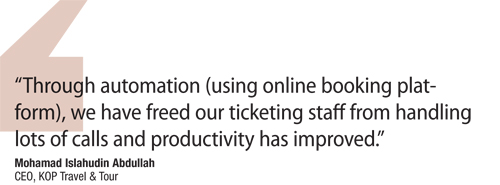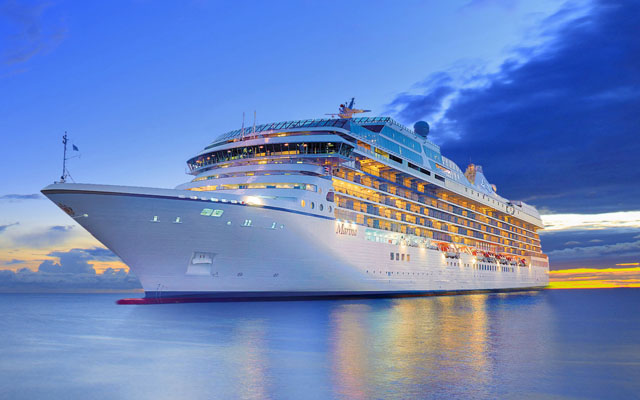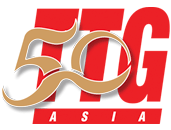As Asia-Pacific’s traveller profiles, experiences and ecosystem become more diverse than ever, the marketplace fragmentation has travel agents seeking out technology and industry insights to better meet travellers’ evolving needs. By S Puvaneswary

Travel is no longer a luxury but a necessity for the booming travel class in Asia-Pacific. However, this travel market is also a highly fragmented one, reflecting immense diversity in its preferences, behaviour as well as aspirations, highlighting the need for travel agents to constantly reconfigure and adapt their businesses in the face of a rapidly evolving travel landscape.
Sabre’s The Polarisation of Asian Travellers report – conducted by The Futures Company for Sabre based on a quantitative survey 3,233 travellers from Asia-Pacific – found that polarisation exists across two key dimensions: the level of control people want to command over their trips and their motivation behind travelling.
Mapping out these polarisations give rise to four distinct traveller types (see sidebar), with the largest proportion (38 per cent) of Asian travellers belonging to the Explorer category, according to this Sabre research. An even mix of business and leisure travellers, as well as ages and gender, are observed across each type.
Sharing the findings during the Sabre Travel Technology Exchange Asia-Pacific in Beijing last September, Sabre Travel Network’s senior vice president for Asia-Pacific, Roshan Mendis, explained: “The research will help to educate and inform Sabre partners on the evolution of their customers, the traveller. (Such studies) ensure we are developing the most relevant products and solutions, designed to help our customers meet the evolving traveller demands they’re facing in today’s rapidly changing travel marketplace.”
The travel technology company is hoping to provide travel agents and suppliers with access to more data-driven decision support tools to better track and respond to their customers’ evolving profiles. Through such initiatives, Mendis also seeks to increase Sabre’s distribution market share in Asia-Pacific from the current 40 per cent to higher figures by 2018.
Agents believe such insights will help to elucidate the ever-changing travel marketplace. Aashutosh Akshikar, president & CEO at Mumbai-based Mercury Travels, said agents have to “figure it out themselves” on what will deliver best against the shifting landscape but new sources of additional intelligence, like Sabre’s recent study, can be a helpful guide in understanding their evolving customers.
He described the majority of his clientele as high net worth FIT customers who are cash rich, time poor and want the agent to handle their itineraries and entire bookings, fitting Sabre’s Followers type as those who require “hand holding”. As well, they appreciate experiences over itineraries, and want the best value instead of focusing on the cheapest, he added.

To keep pace with the changing marketplace, many agents are no doubt already adopting technologies to meet the surge in demand and interest in online bookings.
Walter Dai, CEO of Nightingale Travel & Tours Australia, observed in the last three years a growing Explorer-type profile among his clients from the Filipino and Chinese communities in Adelaide. These travellers want to take charge of their holiday planning and prefer booking their leisure trips online by themselves than having a travel agent do it for them.
To better tap this growing trend in the coming years, Dai spent A$60,000 (US$46,190) on developing a website with online transaction capabilities and A$80,000 on mobile technology.
Mohamad Islahudin Abdullah, CEO at KOP Travel & Tour in Kuala Lumpur, said he was able to increase his market share of MNC customers by correctly identifying the needs and opportunities around this client type, i.e. to make their own bookings and changes directly without relying on a third party.
He explained: “MNCs like to make bookings independently rather than going through a travel agent. Reports can also be generated to reveal the number of bookings, which departments issued the most number of airline tickets and whether clients are choosing the lowest fare, among others.”
KOP Travel started using Sabre’s B2B online booking platform a year ago to enable corporate clients to incorporate their travel policies into the system and for their staff to book trips and make changes.
“Through automation, we have freed our ticketing staff from handling lots of calls and productivity has improved,” added Mohamad Islahudin.
Elaborating on how Sabre is developing new products to suit different customer types and local industry shifts, John Samuel, senior vice president of design at Sabre, predicted that messaging apps will be increasingly important for the Asia-Pacific travel sector in the future. He said his team is exploring the opportunities around adopting conversational interfaces for travel, identifying the potential value they present to Sabre’s customers – from shopping and merchandising to service and support.
Meanwhile, the global technology firm expects the new Sabre Red Workspace, which will be rolled out globally in 2017, to be “a game changer” for the industry.
Said Wade Jones, senior vice president of marketing and strategy, Sabre Travel Network: “It will provide consultants with more comparison shopping options and price transparency, plus deeper insights into historic fare trends, seasonality and travel preferences to support more informed shopping recommendations. Travel consultants will be creating far more personalised and relevant experiences for their customers.”
This article was first published in TTG Asia January 2017 issue. To read more, please view our digital edition or click here to subscribe.




















